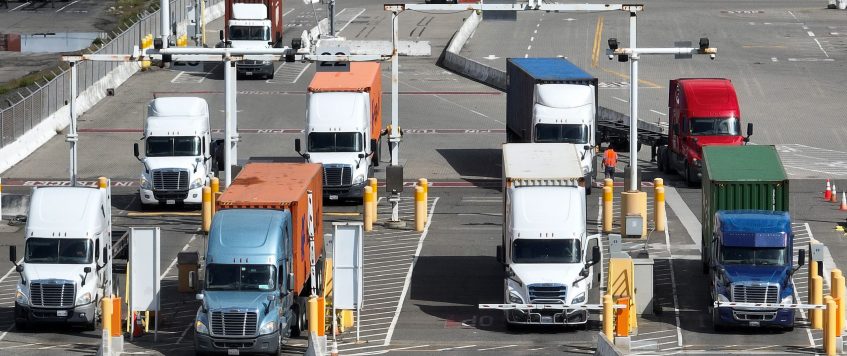-
01
May
California Will Not Allow Heavy-Duty Diesel Truck Sales after 2036
The Golden State continues to set the pace for clean-vehicle regulation in the U.S. This week, the California Air Resources Board (CARB) unanimously approved a new rule to phase out sales of diesel-powered medium- and heavy-duty vehicles by 2036. This is the first such combustion-truck sales ban in the world, according to the board.
The rules, called Advanced Clean Fleets, will also require fleets that operate medium-duty vehicles, those with a gross vehicle weight rating between 8501 and 14,000 pounds, and heavy-duty vehicles (over 14,000 pounds) to shift to zero-emission powertrains. These MD and HD fleets have different deadlines for when their EV transition needs to be completed.
Depending on the type of HD vehicle and where it operates, the CARB rules take effect at different times. Last-mile delivery and drayage trucks—the short-haul vehicles that often operate around port locations—must be zero-emissions by 2035. Other categories have later dates: 2039 for local work vehicles like garbage trucks and day cab tractors and 2042 for sleeper cab tractors and specialty vehicles. The rules approved last week also require reduced emissions from train locomotives in California. As with CARB’s passenger-car emissions regulations, other states may adopt California’s new clean air rules. None have yet announced that they will do so.
Looking to Make Transition Easier for Fleets
CARB has a history, over the decades, of providing financial incentives to make the clean vehicle transition easier, in this case for truck owners and buyers. Some plug-in trucks and buses are eligible for point-of-sale discounts, for example, and there are more local and municipal clean vehicle programs in California than just about anywhere else. CARB also allows for some exemptions when the best technology available for a particular vehicle type points towards upgrading that vehicle with a new, clean engine as the best choice. And the rules do allow fleets to “continue operating existing vehicles through their useful life.”
No one who was paying attention to California’s recent greenhouse-gas regulation efforts should have been surprised by Friday’s diesel vote. Recent news about the big picture— how Gov. Gavin Newsom wants to turn all trucks in the state to zero-emission by 2045—and the small details should have clued people in.
“Dirty Truck Detector” Days
CARB adopted the Advanced Clean Trucks rule in 2020, which set the stage for requirements for manufacturers selling more zero-emission trucks. Last month, the EPA approved the state’s request for a waiver to implement to ban HD diesel vehicles, setting up last week’s vote. Last fall, CARB ran a series of “dirty truck detector” days along popular trucking routes in the state. And, while it’s not directly tied to HD vehicles, CARB voted last August to ban sales of new combustion-engine passenger vehicles in California starting in 2035.
California has good reason to focus on dirty emissions from large vehicles. CARB said these heavy trucks are responsible for about 25 percent of on-road greenhouse gas (GHG) emissions but only make up six percent of the vehicles on California’s roads. The Advanced Clean Trucks rule aims to reduce California’s GHG emissions by 40 percent and reduce petroleum use by 50 percent by 2030. While there are obvious financial challenges to switching to zero-emission HD vehicles, CARB estimates that reduced truck pollution will result in over $26 billion in health savings while also reducing operating costs for fleet managers and truck owners by $48 billion by 2050. With all of the clean air projects in the works, CARB expects there to be around 1.7 million zero-emission trucks in California by the middle of the century.
By: Sebastian Blanco / CarAndDriver

